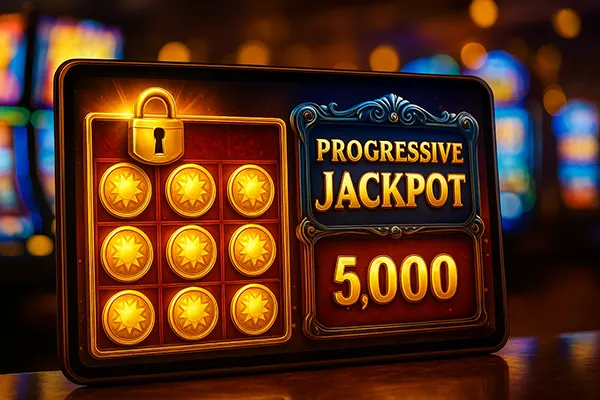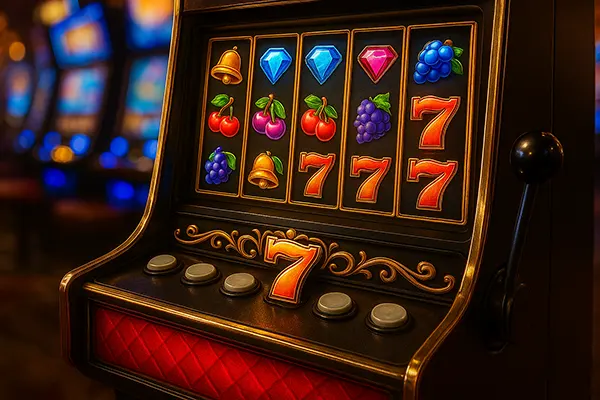
Hold and Win: Could This Mechanic Replace Progressive Jackpots?
Over the past few years, the Hold and Win mechanic has become one of the most recognisable features in modern online slot design. Its distinctive structure, combining bonus rounds and locked symbols, attracts players who enjoy the feeling of incremental progress rather than the long wait for a rare jackpot hit. As of 2025, the debate intensifies: can Hold and Win truly replace progressive jackpots, or does it simply offer a different kind of excitement?
The Evolution of Hold and Win Slots
The Hold and Win mechanic first appeared in the late 2010s, but it was in 2020–2023 that it reached mass popularity. Providers such as iSoftBet, Playson, and Booongo (now part of BGaming) refined the formula, turning it into a signature feature across dozens of titles. The core concept involves locking specific symbols on the reels while the rest respin, often triggering until no more winning symbols appear.
Unlike traditional jackpots, the mechanic provides frequent smaller wins, maintaining player engagement throughout the session. Instead of chasing an elusive million-krone payout, users experience consistent reward cycles that balance volatility with entertainment. This structural difference has proven particularly effective on mobile devices, where shorter playing sessions dominate.
In 2025, the mechanic continues to evolve. Many developers now combine Hold and Win with multiplier ladders, expanding reels, and random boosters. This integration has turned the feature into a flexible framework that supports both casual and high-stakes play without relying on pooled progressive systems.
Advantages Over Progressive Systems
Progressive jackpots, while appealing for their enormous prizes, depend on long-term accumulation. This design can lead to frustration for players who rarely reach the bonus level. Hold and Win, by contrast, provides immediate interaction, with the bonus round often achievable within minutes of play.
Developers also benefit from this approach. Unlike progressives, which require networked infrastructure and pooled contributions, Hold and Win features can be implemented independently within a single game. This reduces technical complexity and allows studios to innovate more freely with theme, volatility, and frequency of bonuses.
From an operator’s perspective, Hold and Win encourages longer retention rates and smoother cash flow. Since the rewards are predictable and distributed more evenly, casinos can balance payout ratios without sudden jackpot drains while still maintaining player satisfaction.
Player Psychology and Market Trends
Modern players increasingly favour transparency and consistent rewards. Surveys conducted in 2024 by European gaming regulators revealed that over 60% of respondents preferred “feature-based” bonus rounds to progressive jackpots. This reflects a broader shift towards games that feel skill-like or interactive, even if outcomes remain randomised.
Furthermore, the social aspect of Hold and Win titles has grown. Many developers have added shared leaderboard systems or mini-tournaments where users compare their bonus wins. These features replicate the community appeal of jackpots while providing a more attainable sense of achievement.
In the Scandinavian market, Hold and Win titles such as *Eagle Power: Hold and Win* and *Diamond Fortunator* remain among the top ten most played slots in 2025. Their popularity shows that predictable excitement, rather than rare life-changing prizes, now drives engagement across demographics.
Integration with Modern Slot Design
Game studios are increasingly blending Hold and Win with other mechanics. Megaways, cluster pays, and bonus buy options have all been successfully merged to create deeper gameplay. This hybridisation keeps the format fresh and prevents it from becoming repetitive.
One notable trend is the introduction of progressive elements inside Hold and Win games themselves. Some titles feature multiple jackpot tiers — Mini, Major, Grand — that grow within the Hold and Win feature rather than across an entire network. This hybrid model bridges the gap between traditional progressives and session-based bonuses.
Developers are also experimenting with adaptive difficulty levels. Using AI-driven analytics, games adjust symbol frequency to maintain excitement while complying with strict fairness and responsible gambling standards. This dynamic adjustment reflects the industry’s commitment to player well-being and engagement.

Will Hold and Win Replace Progressive Jackpots?
Despite its rapid rise, Hold and Win is unlikely to make progressive jackpots obsolete entirely. The emotional pull of massive pooled prizes remains unmatched, especially in global titles such as *Mega Moolah* or *Divine Fortune*. However, the mechanic’s accessibility and flexibility mean it will continue to dominate new releases.
Analysts predict that by 2026, around 40% of all newly launched online slots will feature a Hold and Win element. Progressive jackpots will persist mainly in branded or networked products, while Hold and Win will become the go-to format for mid-variance games targeting casual players.
Ultimately, both models serve different audiences. Progressive jackpots appeal to dreamers chasing a once-in-a-lifetime win, while Hold and Win caters to those who value steady engagement and balanced gameplay. The industry’s future lies in combining both systems to satisfy every player preference.
The Future Balance of Mechanics
Looking ahead, the most successful game developers will be those who integrate multiple reward layers seamlessly. Hybrid formats that include Hold and Win as a core bonus, alongside random progressive triggers, are already being tested by major studios in 2025.
Technological progress in blockchain-based random number generation (RNG) is also reshaping transparency in both Hold and Win and progressive systems. Verified results and decentralised jackpots improve player trust and regulatory compliance.
In essence, the Hold and Win mechanic is not replacing progressive jackpots but redefining how players experience reward potential. It reflects a new era of slot design — one driven by accessibility, fairness, and engagement rather than sheer chance.
